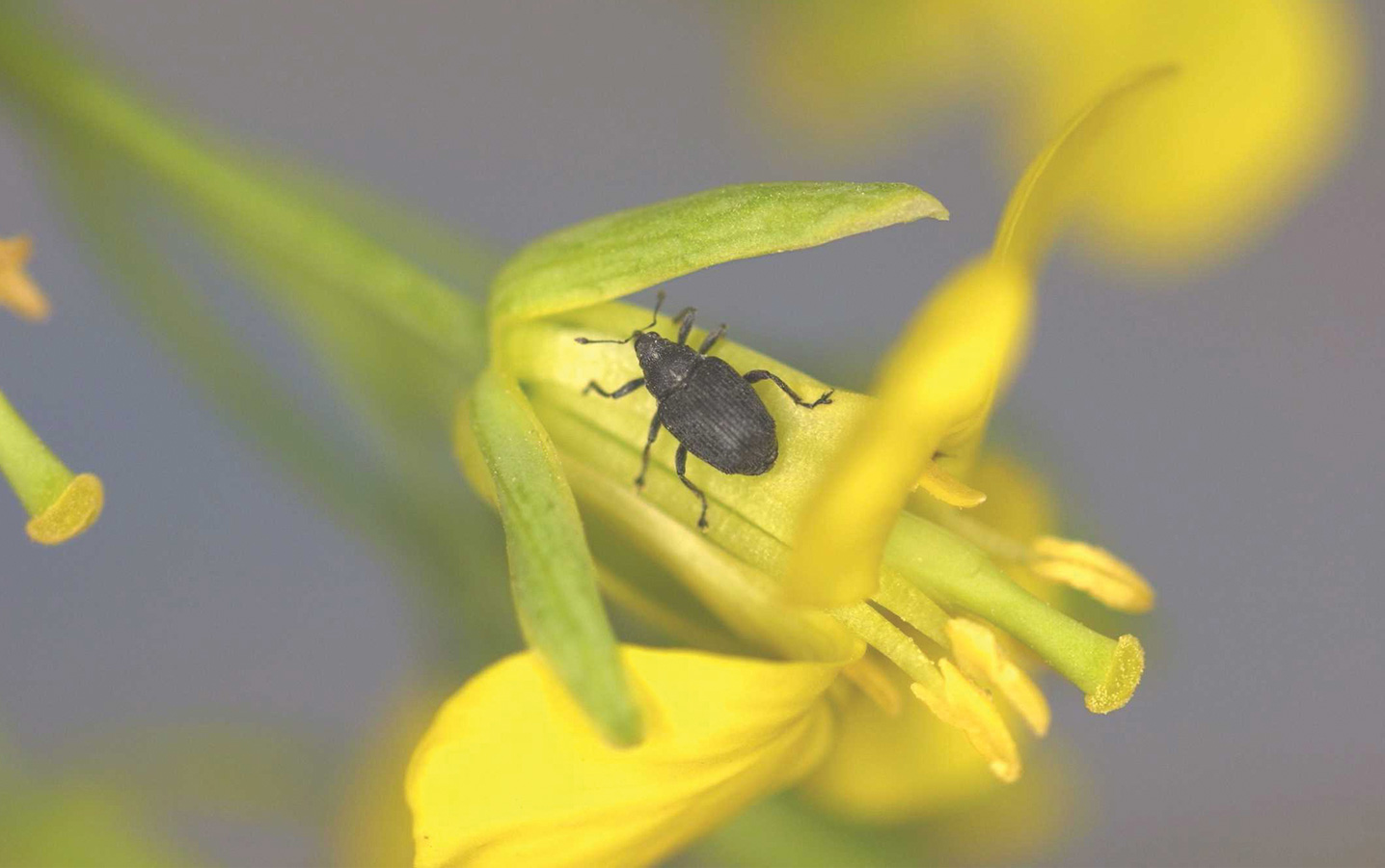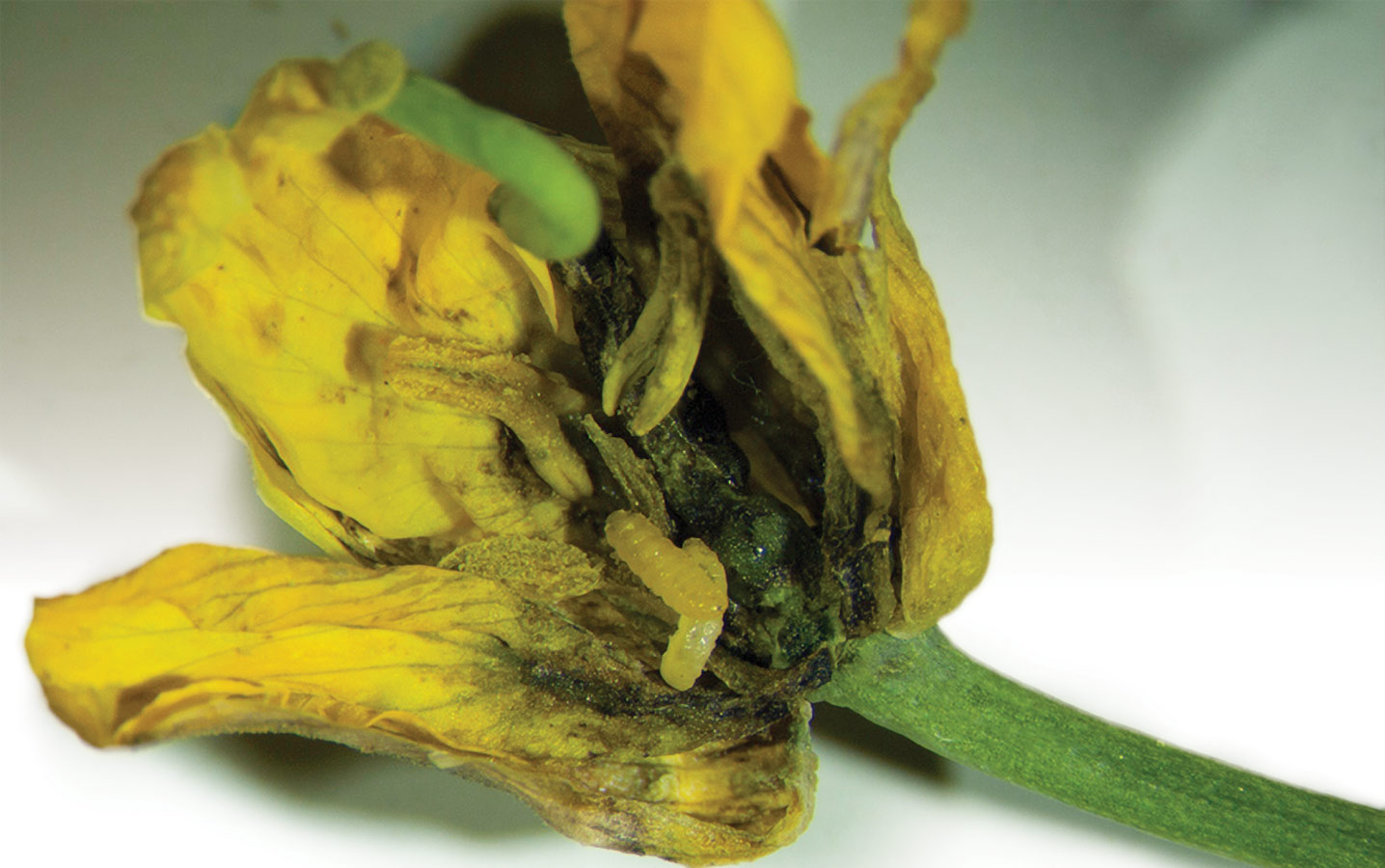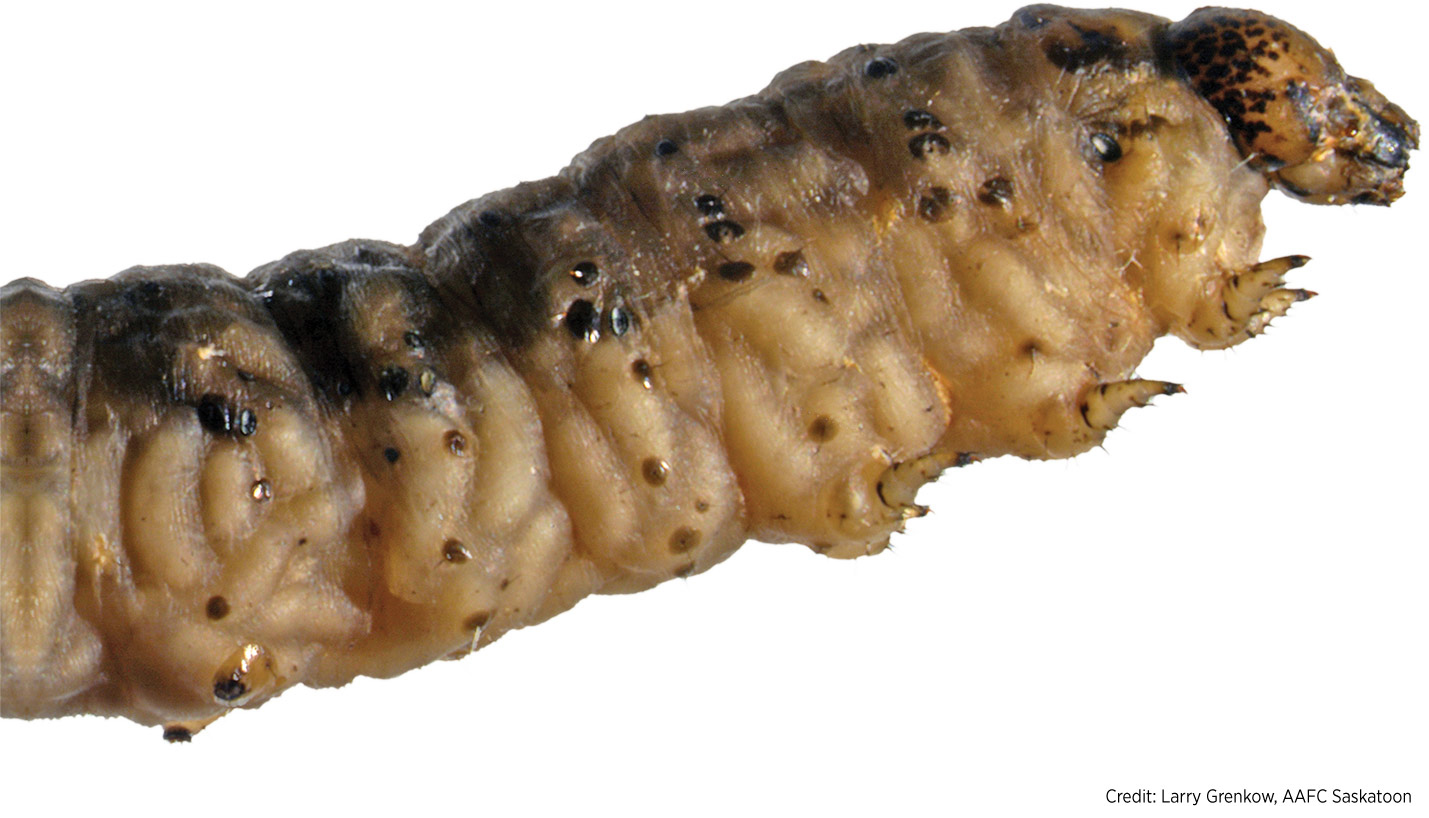
Key practice: Managing cabbage seedpod weevils (when they reach thresholds) with a single insecticide application at early flower stage can reduce pod-stage abundance of lygus bugs and may increase yield by an average of 1.5 bu./ac. Project title, Lead researcher: “Management of lygus bugs and seedpod weevil in canola at the farm level,” 2010-14, Hector...
Read More Key Practice: Struvite shows promise as a phosphorus-fertilizer source. This study shows that struvite recovered from hog manure can match yields compared to monoammonium phosphate and provides higher seed-placed safety. Project title, Lead Researcher: “Can slow-release monoammonium phosphate and struvite improve phosphorus use efficiency and reduce seedling toxicity in canola?” Francis Zvomuya, University of Manitoba...
Read More 
Key practice: Where swede midge is a concern, seed as early as possible. Where swede midge can cause significant losses, consider B. juncea or S. alba varieties over B. napus. Project title, Lead researcher: “Assessing the impact of swede midge on canola production in the Prairies and Ontario,” 2005-08, Rebecca Hallett, University of Guelph Grower...
Read More 
Key Practice: L. maculans, the fungal pathogen that causes blackleg in canola, can produce a mycotoxin called sirodesmin PL, but this study found none of it in Alberta canola samples. Project Title, Lead Researcher: “Evaluation of the toxicity of the secondary metabolites produced by Leptosphaeria maculans,” 2012-14, Xiujie (Susie) Li, Alberta Innovates — Technology Futures...
Read More 
Key practice: The key to minimizing damage from cutworms is early detection through frequent field scouting. Proper identification of cutworm species can be important in the protection of beneficial insects and implementation of other biocontrols. Project title, Lead researcher: “Biocontrol of canola cutworms: Identification and attraction of parasitoids,” 2012-15, Barbara Sharanowski, University of Manitoba Grower organization...
Read More







